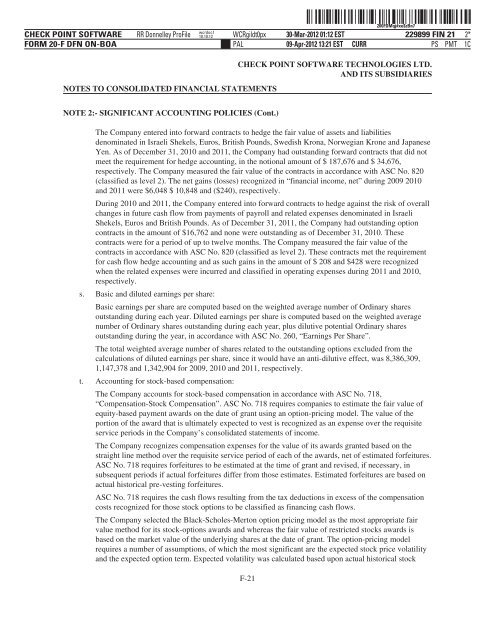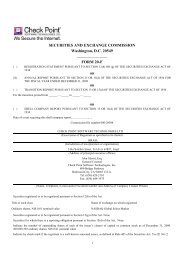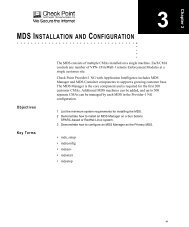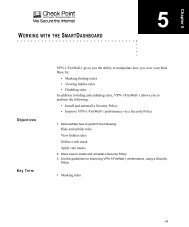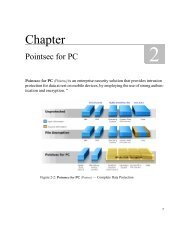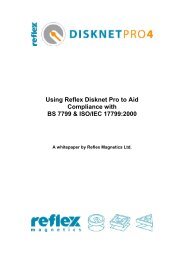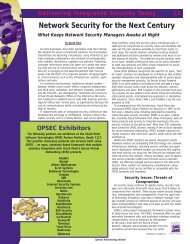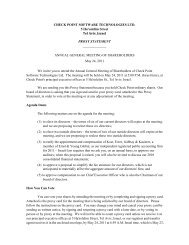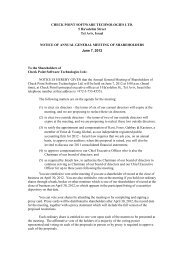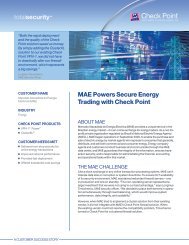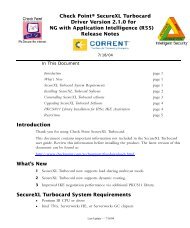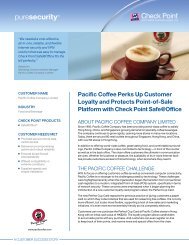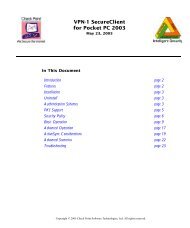printmgr file
printmgr file
printmgr file
Create successful ePaper yourself
Turn your PDF publications into a flip-book with our unique Google optimized e-Paper software.
CHECK POINT SOFTWARE<br />
FORM 20-F DFN ON-BOA<br />
ˆ200FDMqj#xe$zBn7_Š<br />
200FDMqj#xe$zBn7<br />
RR Donnelley ProFile wcrdoc1<br />
10.10.12 WCRgildt0px 30-Mar-2012 01:12 EST<br />
229899 FIN 21 2*<br />
PAL<br />
09-Apr-2012 13:21 EST CURR<br />
PS PMT 1C<br />
CHECK POINT SOFTWARE TECHNOLOGIES LTD.<br />
AND ITS SUBSIDIARIES<br />
NOTES TO CONSOLIDATED FINANCIAL STATEMENTS<br />
NOTE 2:- SIGNIFICANT ACCOUNTING POLICIES (Cont.)<br />
The Company entered into forward contracts to hedge the fair value of assets and liabilities<br />
denominated in Israeli Shekels, Euros, British Pounds, Swedish Krona, Norwegian Krone and Japanese<br />
Yen. As of December 31, 2010 and 2011, the Company had outstanding forward contracts that did not<br />
meet the requirement for hedge accounting, in the notional amount of $ 187,676 and $ 34,676,<br />
respectively. The Company measured the fair value of the contracts in accordance with ASC No. 820<br />
(classified as level 2). The net gains (losses) recognized in “financial income, net” during 2009 2010<br />
and 2011 were $6,048 $ 10,848 and ($240), respectively.<br />
During 2010 and 2011, the Company entered into forward contracts to hedge against the risk of overall<br />
changes in future cash flow from payments of payroll and related expenses denominated in Israeli<br />
Shekels, Euros and British Pounds. As of December 31, 2011, the Company had outstanding option<br />
contracts in the amount of $16,762 and none were outstanding as of December 31, 2010. These<br />
contracts were for a period of up to twelve months. The Company measured the fair value of the<br />
contracts in accordance with ASC No. 820 (classified as level 2). These contracts met the requirement<br />
for cash flow hedge accounting and as such gains in the amount of $ 208 and $428 were recognized<br />
when the related expenses were incurred and classified in operating expenses during 2011 and 2010,<br />
respectively.<br />
s. Basic and diluted earnings per share:<br />
Basic earnings per share are computed based on the weighted average number of Ordinary shares<br />
outstanding during each year. Diluted earnings per share is computed based on the weighted average<br />
number of Ordinary shares outstanding during each year, plus dilutive potential Ordinary shares<br />
outstanding during the year, in accordance with ASC No. 260, “Earnings Per Share”.<br />
The total weighted average number of shares related to the outstanding options excluded from the<br />
calculations of diluted earnings per share, since it would have an anti-dilutive effect, was 8,386,309,<br />
1,147,378 and 1,342,904 for 2009, 2010 and 2011, respectively.<br />
t. Accounting for stock-based compensation:<br />
The Company accounts for stock-based compensation in accordance with ASC No. 718,<br />
“Compensation-Stock Compensation”. ASC No. 718 requires companies to estimate the fair value of<br />
equity-based payment awards on the date of grant using an option-pricing model. The value of the<br />
portion of the award that is ultimately expected to vest is recognized as an expense over the requisite<br />
service periods in the Company’s consolidated statements of income.<br />
The Company recognizes compensation expenses for the value of its awards granted based on the<br />
straight line method over the requisite service period of each of the awards, net of estimated forfeitures.<br />
ASC No. 718 requires forfeitures to be estimated at the time of grant and revised, if necessary, in<br />
subsequent periods if actual forfeitures differ from those estimates. Estimated forfeitures are based on<br />
actual historical pre-vesting forfeitures.<br />
ASC No. 718 requires the cash flows resulting from the tax deductions in excess of the compensation<br />
costs recognized for those stock options to be classified as financing cash flows.<br />
The Company selected the Black-Scholes-Merton option pricing model as the most appropriate fair<br />
value method for its stock-options awards and whereas the fair value of restricted stocks awards is<br />
based on the market value of the underlying shares at the date of grant. The option-pricing model<br />
requires a number of assumptions, of which the most significant are the expected stock price volatility<br />
and the expected option term. Expected volatility was calculated based upon actual historical stock<br />
F-21


